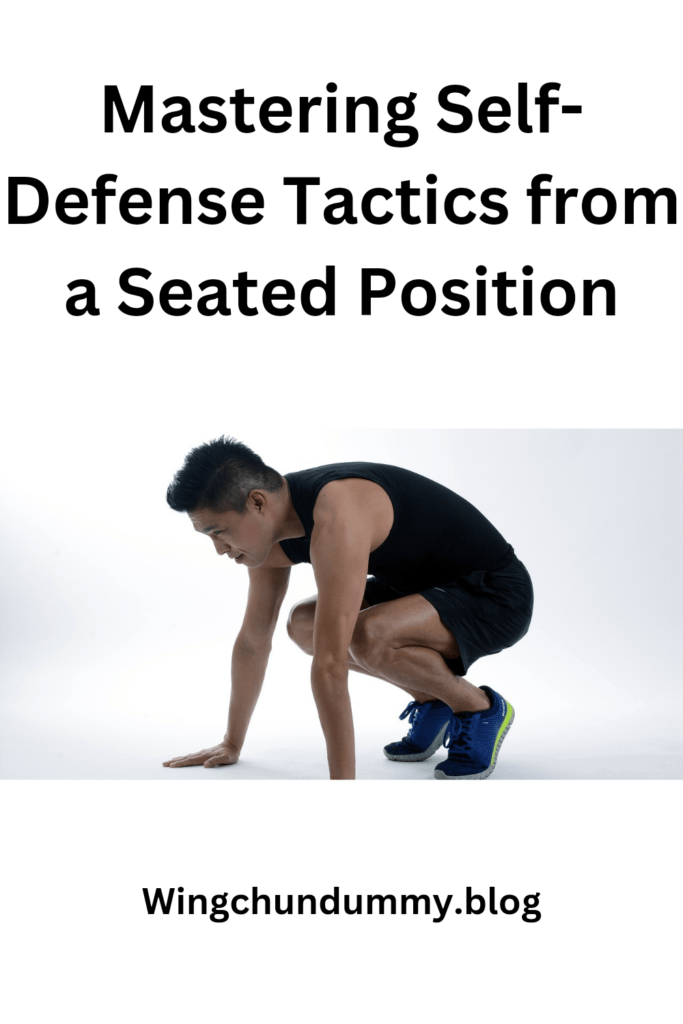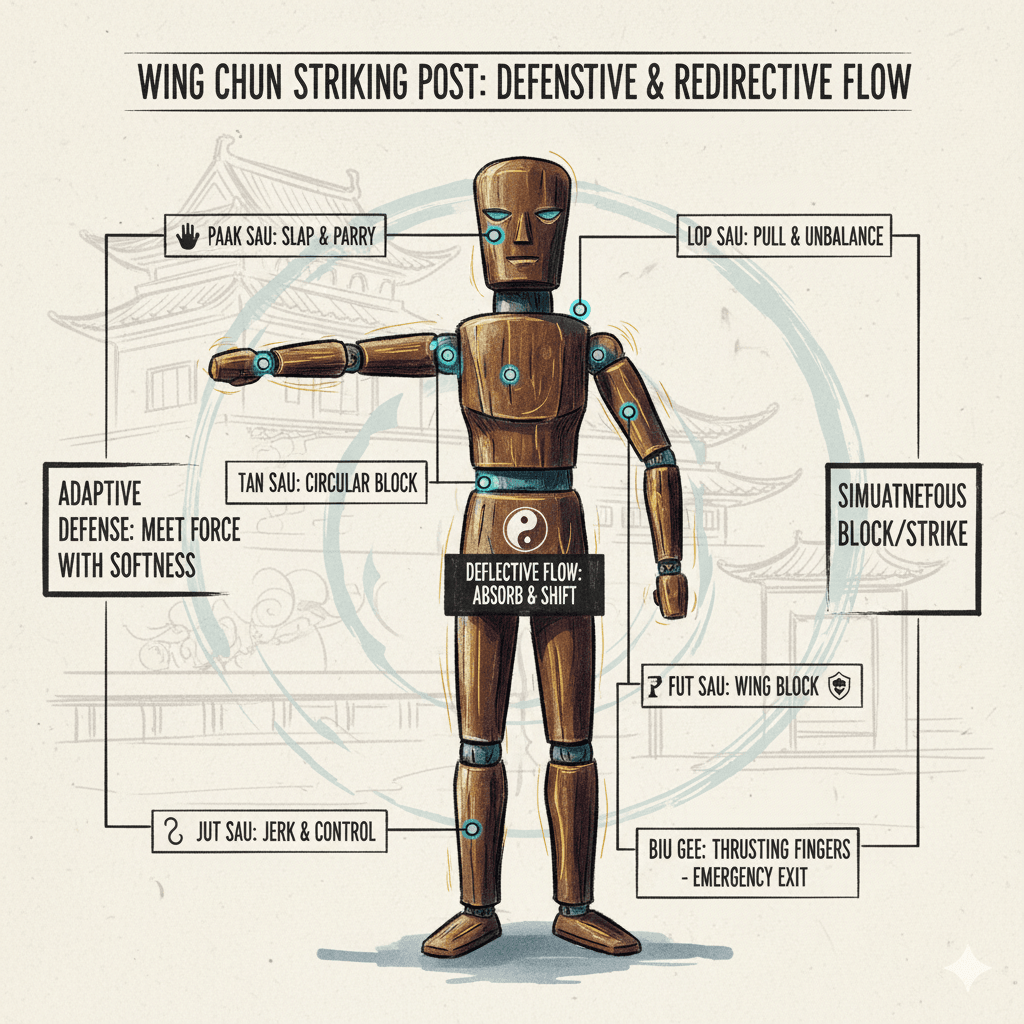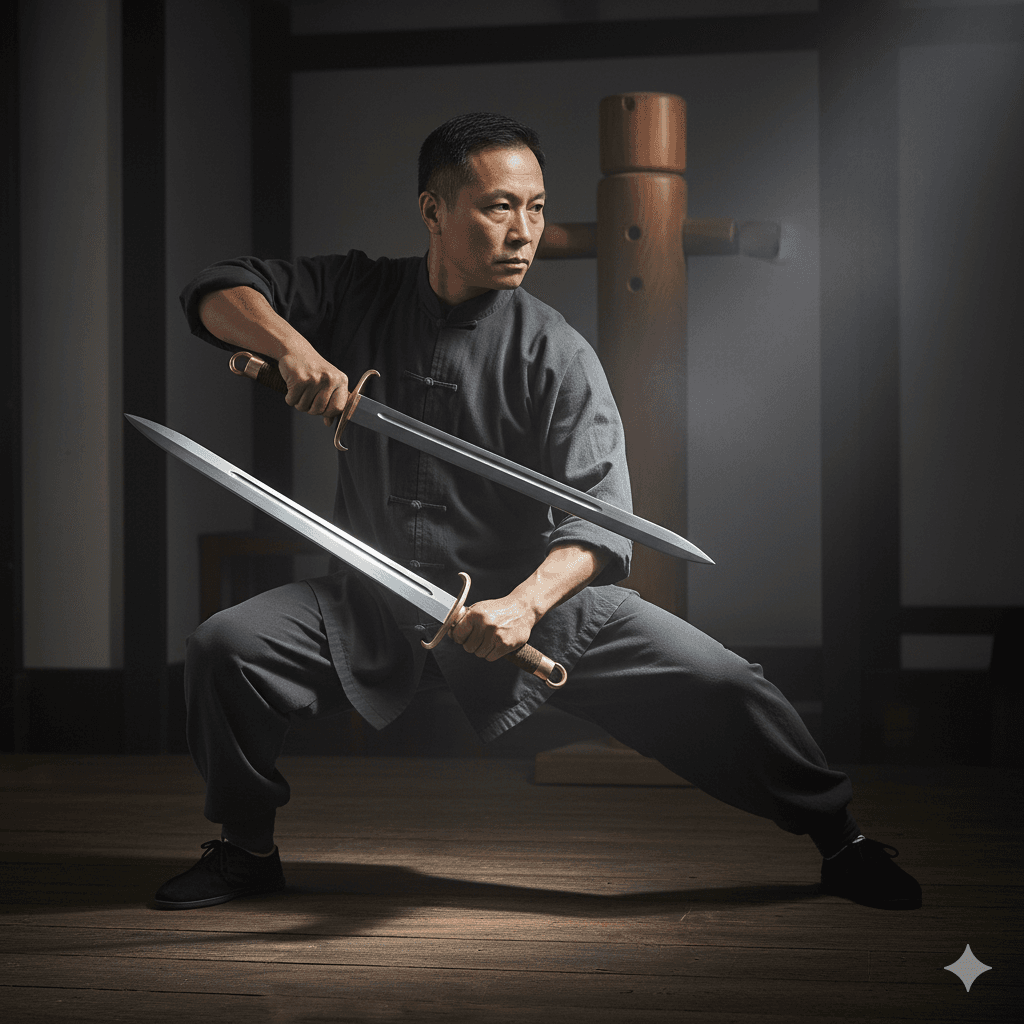Seated Self-Defense
In today’s rapidly changing world, personal safety has become a paramount concern.
While most traditional self-defense techniques are designed for individuals in a standing position, there is a growing need to address self-defense from a seated position.
This need is particularly prevalent among office workers, the over 70 people, and those with mobility issues, who spend a significant portion of their time seated.
Recognizing and understanding the unique challenges faced by these groups is crucial in developing effective self-defense strategies.
The primary goal of this blog post is to equip readers with practical and effective self-defense tactics that can be utilized while seated.
Whether you are working at a desk, using a wheelchair, or sitting on public transport, knowing how to protect yourself in a vulnerable position is essential.
It’s important to acknowledge that while seated, one’s mobility is restricted.
making it vital to adapt traditional self-defense techniques to fit these circumstances.
Furthermore, this blog will explore the psychological aspects of self-defense, emphasizing the importance of awareness and mental preparedness.
Understanding how to remain calm and focused in high-stress situations can significantly enhance the effectiveness of physical techniques.
By combining both physical and psychological strategies, individuals can develop a comprehensive approach to self-defense that is both practical and empowering.
As we delve into the various tactics and techniques, we will also highlight the importance of regular practice and training.
Consistent rehearsal of these methods ensures that they become second nature, thereby increasing one’s confidence and capability in real-life scenarios.
Ultimately, our aim is to provide readers with the knowledge and skills necessary to feel secure and self-assured, regardless of their seating position.
Understanding the Unique Challenges
Self-defense from a seated position presents a distinct set of challenges that significantly differ from those encountered while standing.
One of the primary issues is limited mobility.
When seated, an individual’s ability to move quickly or change positions is severely restricted, making it more difficult to evade attacks or create distance from an assailant.
This reduced mobility necessitates a different approach to self-defense, one that emphasizes efficiency and precision over the broader, more dynamic movements possible when standing.
Additionally, the range of motion is inherently restricted when one is seated.
Actions such as kicking or even a swift pivot can be impeded by the constraints of a chair.
Traditional self-defense techniques, which often rely on full-body movements for maximum impact, may not be as effective.
For instance, techniques that involve stepping back or side-stepping to avoid an attack are impractical.
The seated individual must therefore rely on techniques that are specifically adapted to this position.
incorporating movements that can be executed effectively within the limited space.
Another critical factor is the potential vulnerability associated with being confined to a chair.
In such a position, the defender is at a lower height compared to a standing attacker, which can place them at a disadvantage.
This height disparity can make it easier for an assailant to overpower or reach sensitive areas such as the head and upper body.
Furthermore, the act of standing up to defend oneself can be slow and cumbersome, potentially exposing the individual to greater risk during the transition.
Thus, it is crucial to develop strategies that allow for effective defense without the need to stand up.
Given these challenges, traditional self-defense techniques must be adapted to be effective from a seated position.
This involves focusing on methods that maximize the use of available strengths.
such as upper body strength and the ability to use the chair as a defensive tool.
By understanding and addressing these unique challenges.
individuals can enhance their preparedness and confidence in self-defense scenarios while seated.
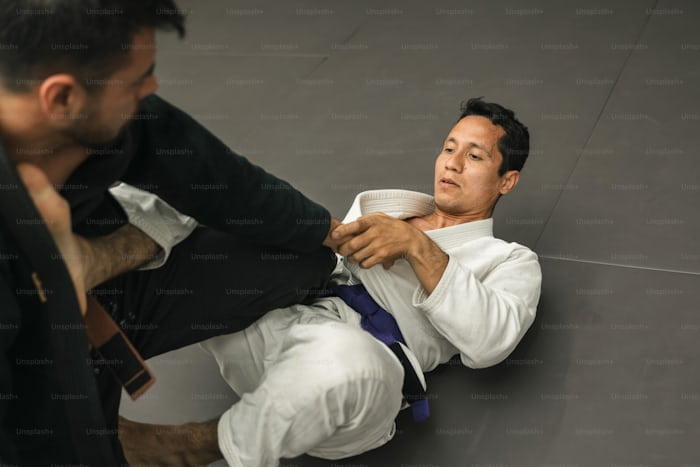
Situational Awareness and Prevention
Situational awareness stands as the cornerstone of self-defense, especially from a seated position.
The ability to perceive, comprehend, and respond to your environment is crucial in identifying potential threats early and implementing preventive measures.
Remaining vigilant and alert, even while seated, can significantly enhance your safety and reduce the likelihood of confrontations.
To maintain situational awareness, start by regularly scanning your surroundings.
This means periodically observing people, their actions, and any unusual behavior.
A casual yet deliberate glance around your environment can help you notice anything out of the ordinary.
Pay special attention to individuals who may appear agitated, overly interested in you, or behaving erratically.
Positioning yourself strategically can also enhance your awareness.
When seated in public places such as restaurants or waiting areas.
choose a seat that allows you to face the entrance or have a clear view of the room.
This positioning not only helps in monitoring incoming activity but also provides a better vantage point to observe others discreetly.
Another critical aspect of situational awareness is minimizing distractions.
While it is natural to use electronic devices or engage in conversations, it is important to do so without becoming completely absorbed.
Taking intermittent breaks to check your surroundings can help maintain a balance between staying informed and being alert.
In addition, trust your instincts.
If something or someone makes you feel uneasy, it is better to err on the side of caution.
This might involve discreetly moving to a different location, informing a nearby authority figure, or preparing yourself mentally for a potential threat.
Lastly, implementing preventive measures can further bolster your safety.
Simple actions such as keeping personal belongings secure and within reach, avoiding isolated areas, and staying in well-lit environments can deter potential threats.
By integrating these practices into your daily routine.
you can master the art of situational awareness and significantly reduce the risk of confrontations while seated.
Basic Defensive Postures and Movements
Understanding how to maintain defensive postures while seated is essential for effective self-defense.
When you are in a seated position, your ability to maneuver is naturally restricted.
however, adopting the right posture can significantly enhance your defensive capabilities.
The key elements to focus on are foot placement, hand positioning, and body orientation.
To begin with, ensure that your feet are firmly grounded.
This stability forms the foundation of all subsequent movements.
Ideally, both feet should be flat on the floor, shoulder-width apart.
This stance not only provides balance but also allows for quick weight shifts and pivots.
In case of an attack, being able to shift your weight efficiently can help you avoid or deflect blows.
Hand positioning is equally crucial.
Keep your hands slightly raised and in front of you, with palms open.
This non-threatening posture allows you to react quickly while also serving as a potential barrier against an aggressor.
Your arms should be close to your body but ready to extend or retract as the situation demands.
Body orientation is another vital aspect.
Position yourself at a slight angle to the attacker.
This minimizes the target area and makes it easier to use your limbs effectively for defense.
Your torso should be slightly leaned forward, which aids in quicker movement and better balance.
Fundamental movements from a seated position include shifting weight, pivoting, and using the chair to your advantage.
Shifting weight involves transferring your body mass from one side to the other, allowing you to dodge or absorb impacts more effectively.
Pivoting, on the other hand, enables you to rotate your body swiftly, thereby redirecting the force of an attack or positioning yourself for a counterstrike.
Utilizing the chair can offer a tactical advantage.
For instance, you can push against the backrest to propel yourself forward or use the armrests to gain leverage.
Understanding these basic defensive postures and movements can significantly increase your ability to protect yourself, even when seated.
Effective Strikes and Techniques
Mastering self-defense tactics from a seated position requires an understanding of various strikes and techniques that can be executed with precision and power.
When faced with an attacker, it is crucial to utilize hands, elbows, and legs effectively to deliver impactful blows.
These techniques are designed to target vulnerable areas of the attacker’s body, thereby maximizing your defensive capabilities.
One of the primary strikes to employ is the palm strike.
From a seated position, raise your hand and keep your fingers together, thumb tucked in, and palm facing outward.
Aim for the attacker’s nose or chin, using your full body weight to drive the strike forward.
This technique can disorient the attacker, providing you with a moment to escape or follow up with additional strikes.

Elbow strikes are another powerful tool in close-quarters self-defense.
With your elbow bent at a 90-degree angle, thrust it into the attacker’s face, throat, or solar plexus.
The sharp point of the elbow can cause significant pain and incapacitate your assailant.
To enhance the effectiveness, twist your torso while delivering the strike, adding momentum and force.
Leg techniques, such as the front kick, can also be highly effective from a seated position.
Lean back slightly to create space, then thrust your leg forward, aiming for the attacker’s knee, groin, or midsection.
The front kick can be executed quickly and with considerable force, disrupting the attacker’s balance and causing substantial pain.
Combining these strikes with targeted areas of vulnerability enhances their effectiveness.
Aim for soft tissue areas such as the eyes, throat, and groin, which are more susceptible to damage.
Practicing these techniques regularly will improve your muscle memory and reaction time.
making them more instinctive in a real-life scenario.
Incorporating these self-defense tactics from a seated position into your repertoire can significantly increase your ability to protect yourself in various situations.
Remember, the key is to remain calm, focused, and deliberate in your actions to ensure your safety and well-being.
Using Everyday Objects as Weapons
In the realm of self-defense, the ability to utilize everyday objects as improvised weapons can significantly enhance one’s ability to protect themselves, particularly from a seated position.
Common items within arm’s reach can be remarkably effective when employed correctly.
Understanding how to leverage these objects not only broadens one’s defensive tactics.
but also provides a sense of preparedness in various environments.
One of the most accessible tools often found near a seated area is a pen 🖋️🖊️.
A sturdy pen can serve as an effective self-defense weapon when wielded with precision.
Targeting sensitive areas such as the eyes, throat, or hands can incapacitate an attacker long enough for one to escape or call for help.
It’s crucial to keep a firm grip and aim with intention to maximize the pen’s effectiveness.
Books, especially hardcovers, can also be used defensively.
A heavy book can act as a shield to block strikes or as a blunt object to deliver impactful blows.
Holding the book with both hands allows for greater control and force, making it a versatile tool in a confrontation.
Additionally, the element of surprise is on your side, as few attackers expect a book to be used in self-defense.
Another often overlooked yet powerful item is the chair itself.
A chair can be used to create distance between you and the attacker or as a barrier to prevent them from getting closer.
Lifting the chair by its legs and using it to thrust or swing can disrupt the assailant’s balance and give you a critical advantage.
Ensuring you have a good grasp on the chair and using its weight to your benefit are key considerations.
When considering the use of everyday objects as weapons, safety must always be a priority.
Training and practice are essential to ensure these items are used effectively and without self-harm.
Awareness of your environment and the objects within it can transform ordinary items into powerful tools for self-defense.
providing an added layer of security in potentially dangerous situations.
Escaping and Creating Distance
When it comes to self-defense, escaping from an attacker and creating distance is paramount, especially when you are in a seated position.
The first principle to understand is the significance of quick, decisive action.
Your immediate goal should be to disentangle from grips and push off against the attacker.
thus maximizing your safety and gaining the necessary space to transition to a standing position or further defensive actions.
One effective technique for disentangling from an attacker’s grip involves targeting their thumbs.
If the attacker grabs you, use both of your hands to pry their thumb away from their other fingers, as the thumb is the weakest link in the grip.
Once freed, you can use your legs to push off against the attacker, propelling yourself backward and creating critical distance.
Using the chair as a shield can also provide a tactical advantage.
If the attacker is approaching, quickly maneuver the chair between you and them.
This action not only creates a physical barrier but also buys you valuable time to strategize your next move.
In some scenarios, tipping the chair towards the attacker can create a momentary distraction.
allowing you to stand up and prepare for further defensive measures.
Additionally, if the situation allows, consider using the chair’s legs or other parts as improvised weapons.
Striking the attacker’s shins or knees with the chair can induce pain and instability, giving you an opportunity to escape.
Always remember, the primary goal is not to engage in prolonged combat but to create sufficient distance to flee or seek help.
In essence, the key to mastering self-defense from a seated position lies in swift, decisive actions.
By effectively disentangling from grips, utilizing the chair as a shield, and pushing off against the attacker, you can create the necessary distance to ensure your safety.
Incorporating these techniques into your self-defense repertoire will significantly enhance your ability to respond to threats while seated.
Training and Practice Tips
Effective training and practice are crucial for mastering self-defense tactics from a seated position.
One of the primary recommendations is to incorporate regular drills that simulate real-world scenarios.
Begin by practicing basic movements such as shifting your body weight, bracing yourself, and executing strikes or blocks from a seated position.
These foundational exercises will help develop muscle memory, which is vital for reacting instinctively under pressure.
To start, set aside dedicated practice time each week.
A structured routine can include warm-ups, technique drills, and scenario-based exercises.
Warm-ups should focus on enhancing flexibility and mobility, particularly in the upper body and core.
as these areas are essential for executing effective self-defense moves while seated.
Incorporate drills such as punching and blocking while seated.
Use targets like pads or cushions to simulate an assailant.
Practice striking with different parts of the body — fists, elbows, and even the edge of a hand.
Blocking drills can be enhanced by having a partner simulate attacks, allowing you to practice deflecting these from a seated position.
This partner work helps in understanding the angles and force needed to effectively block or counter an attack.
Scenario-based exercises are particularly beneficial.
Create controlled environments that mimic potential threats you might face in a seated position — such as being approached from the front or side.
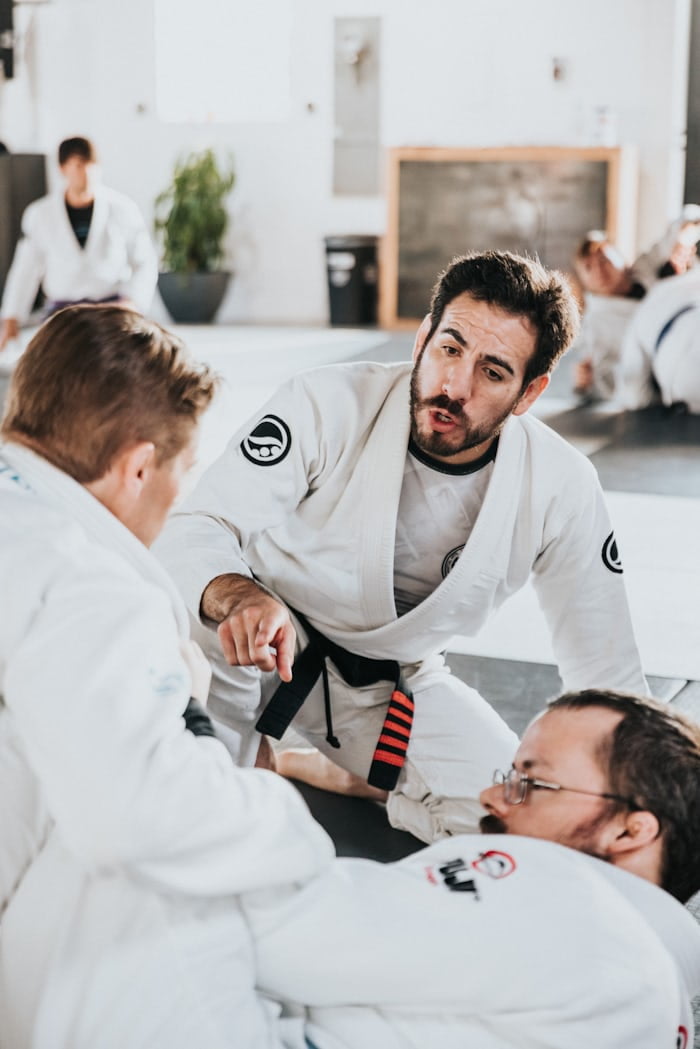
Practicing these scenarios will help you become more adept at recognizing threats and responding appropriately.
Rotate through different scenarios to build adaptability and confidence.
Additionally, mental rehearsal is a powerful tool.
Visualize various scenarios and mentally walk through the steps you would take to defend yourself.
This cognitive practice complements physical drills, reinforcing your ability to react swiftly and effectively.
Regular practice is essential for building confidence and ensuring that these techniques become second nature.
Consistency in training, combined with realistic drills and scenario practices, will significantly enhance your ability to protect yourself from a seated position.
Remember, the goal is not just to learn the techniques.
but to be able to execute them effectively when it matters most.
Conclusion and Final Thoughts
In this blog post, we have delved into the crucial topic of mastering self-defense tactics from a seated position.
We’ve explored various strategies and techniques designed to empower individuals to protect themselves effectively, even when mobility is limited.
Whether you’re seated in a vehicle, at a desk, or in a public space, understanding these self-defense methods ensures that you are prepared for unexpected situations.
It is essential to remain vigilant and aware of your surroundings at all times.
Keeping a heightened sense of situational awareness can significantly reduce the risk of becoming a target.
Regular practice of the self-defense techniques discussed can help refine these skills, making them instinctual responses in times of need.
Moreover, while practicing at home is beneficial.
enrolling in professional self-defense classes can provide a more comprehensive understanding of these tactics.
Expert instructors can offer personalized guidance, correct any mistakes.
and introduce advanced techniques that can further bolster your confidence and capability.
Empowerment through self-defense is not just about physical readiness; it’s also about mental preparedness.
Knowing that you have the skills to defend yourself can be a significant boost to your overall sense of security and well-being.
Consistent practice and professional training can transform these skills into a powerful toolset.
enabling you to navigate the world more confidently.
Ultimately, the ability to protect oneself, regardless of the situation, is a valuable asset.
By staying vigilant, practicing consistently, and seeking professional training.
you can ensure that you are well-prepared to face any challenge that comes your way.
Remember, the journey to mastering self-defense is ongoing, and every step taken is a step towards greater empowerment and peace of mind.

